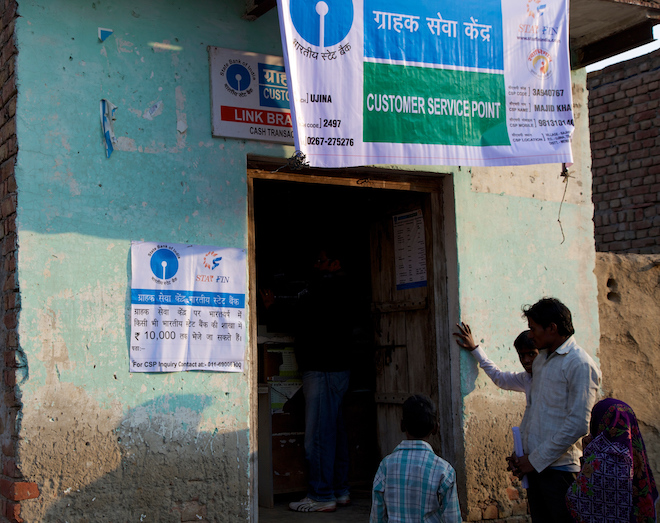The shift towards suitability frameworks for consumer protection in India is a bold and important enhancement of existing financial consumer protection efforts. To fully succeed, this will require a proactive–not just reactive–approach that measures suitability in a clear manner at the point of sale across a range of providers and products.
Mystery shopping is a particularly useful tool for gathering this suitability evidence base. Mystery shopping is a research tool that involves sending consumers to conduct sales visits or other transactions, in order to measure the quality of the sales experience, product advice, consumer assessment and related consumer protection issues such as disclosure of key terms.
Researchers such as Mowl and Boudot (2014), and Anagol, et al. (2013) have already shown how mystery shopping could be used to measure suitability principles in India. Similar to the experiences in India, mystery shopping exercises detailed in CGAP’s just-released Mystery Shopping Technical Guide in markets such as Mexico, Ghana and the Philippines have shed light on how sales staff conduct, financial advice and sales behavior can have important implications for both financial inclusion and for financial consumer protection. For example, mystery shopping in both India (Mowl and Boudot, 2014) and Mexico (Gine, Martinez and Mazer, 2014) demonstrated how even when low-balance savers sought to open basic savings accounts that are mandated by law, most sales staff did not disclose these products and even created barriers to the shoppers acquiring these products although they asked for the basic accounts directly.[1]
CGAP’s Technical Guide summarizes in an easy “how-to” manner our experience conducting mystery shopping for a range of products. This includes descriptions of the several stages of implementing a mystery shopping program, as well as actual field guides such as questionnaires, shopper training materials, sales staff surveys and product audit forms. The guide is based on mystery shopping research conducted by CGAP, the World Bank, development agencies, and financial supervisors in six different emerging markets that included products such as savings, loan, insurance, agent banking and credit card products.

Consumers seeking access to financial services (Jeanette Thomas/CGAP)
CGAP’s experience conducting mystery shopping studies has identified barriers that are both professional and personal when sales staff deal with lower-income or less experienced consumers. This can include an insurance agent hoping to increase their commissions through higher cost products giving improper advice to a consumer, or a bank teller pre-judging a lower income consumer and refusing them a savings account. It can be hard to measure these biases and how they impact consumers’ experiences, but they can play an important role in whether and how consumers achieve financial access and whether they value financial services.
Furthermore, measuring market conduct of sales staff will be an essential ingredient for the current shift in consumer protection policy in India towards a suitability framework and can support this framework in several ways:
- By using real-life consumers with different financial background and product needs to conduct the shopping visits, mystery shopping can help measure how well sales staff guide financial consumers to select the right product for their needs, and where cases of mis-selling may be occurring and need to be corrected.
- Mystery shopping offers a complementary marketing monitoring tool to capture consumer complaints. Consumers may not always report suitability relevant issues of market conduct on their own. This could be because they do not know they have been given unsuitable advice, are not aware of their rights, or are reluctant to use formal complaints channels (a reluctance CGAP has observed with certain consumer types in behavioral mappings of recourse systems.)
- Mystery shopping can also help to measure “most suitable” amongst a range of product options that would be appropriate for a specific customer profile. The CGAP Technical Guide details how researchers used lists of all products on offer at institutions shoppers visited to assess what the most appropriate product recommendation would have been, and compare this to the actual advice given. For policymakers looking to implement suitability regimes, combining mystery shopping with up-to-date and complete listings of all products and terms provides a useful way to quantify suitability (for specific customer profiles) across different providers with varying numbers of products on offer.
By using the mystery shopping methods detailed in the CGAP Technical Guide it is possible to measure how financial advice changes by consumer type, understand why some consumers may receive less suitable product advice and service than others, and begin to enforce the principles of suitability in the practice of financial service providers and their sales staff.
—
[1] Mowl and Boudot (2014), Barriers to Basic Banking: Results from an audit study in South India, NSE-IFMR Working Paper 2014-01
Gine, Martinez and Mazer (2014), Financial (dis)Information: Evidence from an audit study in Mexico, World Bank Policy Research Working Paper 6902



